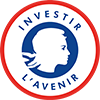
I agree Our site saves small pieces of text information (cookies) on your device in order to deliver better content and for statistical purposes. You can disable the usage of cookies by changing the settings of your browser. By browsing our website without changing the browser settings you grant us permission to store that information on your device.

Successful long term collaborations with French and European partners (Fondation maladies rares, A.F.S.C.-C.F.C, Gencodys Consortium,…) allowed generation of customed mouse models for researchers investigating gene function and human pathophysiology.
More than 50 mouse rare disease models are now available for your research.
A disease or disorder is defined as rare in Europe when it affects less than 1 in 2,000.
Over 7,000 rare diseases are now described, meaning that 3 million people are affected in France. This number is between 27 and 36 million people in Europe, affecting between 6 and 8% of the population in his life.
All the page content is based on the following ressources : Rare Disease Day's web site, the last report from the European Union Committee of Experts on Rare Diseases (EUCERD) European Report 2014.
Since 2009, when the global research community started to apply modern genomics to rare disease research, scientists’ ability to identify the causative genes of diseases has increased exponentially. The genes of some 3,500 – 4,000 diseases are still unknown, but 5 to 10 of these new genes are found almost every week. Medical research is being transformed. Since 80% of rare disease are genetics, the mouse model became crucial in fundamental research for understanding rare diseases.
Given the low number of people with (Less than 1 / 2,000 patient in Europe), few studies have conducted by lack of staff significant. Rare diseases (including neuromuscular, metabolic, infectious, autoimmune, and cancer susceptibility), are generally serious and disabling in 65% known cases. The vast majority are also orphaned, which is to say that there is no therapeutic treatment. Mouse models for these disorders are triply useful. Firstly, the models are useful for decrypting the mechanisms behind of the specific disease. Secondly, a platform for testing therapies, as illustrated by recent work published by Françoise Muscatelli’s team at the Institute of Neurobiology Mediterranean (Inmed, Marseille) with respect to the Prader Willi Syndrome, one of our oldest scientific collaborations. Finally, research into rare diseases can benefit research into common sporadic disorders like obesity and cardiovascular diseases, including strokes and heart attacks. Ongoing work with families affected by rare diseases will, step-by-step, offer insights into the details of the molecular processes that underlie common diseases, and this will eventually lead to the development of new therapies that may also have wider applications.
Behind all these argues PHENOMIN keeps its involvement in fuctional genomics research in the field of rare diseases.
PHENOMIN shares and opens its activities/services to the French scientific community through joint calls with the Fondation maladies rares. 4 calls for projects were already launched since 2013 and have given a significant boost to the development of mouse models in the field of rare disease. 53 projects have been or are being realized from 145 submissions. All generated models are available after 2 years embargo.
Call 1, February 2013=> 20 new mouse models
Call 2, January 2015 => 13 new mouse models
Call 3, January 2017 => 12 new mouse models
Call 4, March 2019 => 5 new mouse models and 3 rat models
GENCODYS was a research consortium dedicated to discover the functions and dysfunctions of the brain. It works on “Genetic and Epigenetic Networks in Cognitive Dysfunction”. With this knowledge the consortium aims to work on developing possible cures and patient information.
The consortium was funded by the European Union under the 7th framework program (Health- 241995). The consortium counted 16 members, 13 academic research groups, 2 SMEs and a patient network organization. Most consortium members are from European member states (namely Austria, Belgium, France, Germany, Great Britain and The Netherlands) but there are two non-European members (namely Iran and Pakistan).The funding was stopped in April 2016.
Finally, the consortium have supported scientific researches and generation of mouse models.
The goal of the International Mouse Phenotyping Consortium (IMPC) is to discover functional insight for every gene by generating and systematically phenotyping 20,000 knockout mouse strains.
For clinical researchers who are looking for connections between gene and disease, IMPC is a gene phenotyping discovery resource that provides an unprecedent volume of high quality data. Clinicians can use IMPC data to find relevant mouse models to human disease by orthologous gene and by shared phenotypic features.

See our In vivo Viral Transduction dedicated page to explore our frequently used vectors and delivery modes including stereotactic admininistration (intraventricular and cerebellar)
See our In vivo Viral Transduction dedicated page to explore our frequently used vectors and delivery modes including stereotactic admininistration (intraventricular and cerebellar)